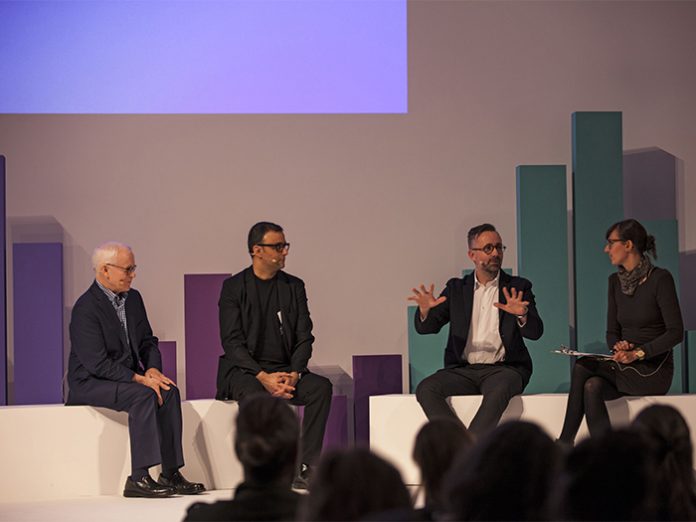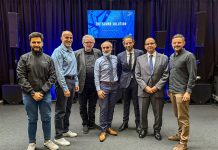Meyer Sound has been a key collaborator for RESONATE: Thinking Sound and Space, a conference that brought together architects, acoustical engineers, sound artists, journalists, museum directors and students for a unique and wide-ranging exchange of ideas and inspiration.
Focused exclusively on the role of sound in architectural space, the full-day program was organised by reSITE, a Prague-based non-profit platform acting to improve the urban environment, and MAAT (Museum of Art, Architecture and Technology) in Lisbon that hosted the event. Welcoming more than 320 guests to the conference, MAAT Director Pedro Gadanho notes that RESONATE provides an extraordinary opportunity to re-think fundamental concepts of architecture by incorporating a broader understanding of how sound affects our lives.
In a panel discussion, British architect Michael Jones of Foster + Partners describes how sound and acoustics were leveraged to improve creative communication at the new UK headquarters for Bloomberg. Jones then relates to how Meyer Sound’s Constellation active acoustic system furthered this goal in some larger meeting spaces. “Instead of needing these awkward microphones and passing them around the audience, in this case the room does everything for you. The acoustic in the room is modified electronically, and it means we can have an intellectual exchange with the kind of natural interaction we were looking to achieve.”
Meyer Sound Constellation Project Director John Pellowe reviews a number of other Constellation systems in use worldwide — in concert halls, universities and multi-use event spaces, as well as other corporate installations — but acknowledged that the electronic technology still depends on a complementary physical space. “We still need to collaborate with architects and acousticians,” he emphasised, “because if you put these technologies in a bad space, if the base acoustic isn’t designed to accommodate the enhancements, then you have a useless base. So we will continue to work with architects to build better spaces as time goes on, and as we learn each other’s needs.”
In a retrospective of recent works, architect Elizabeth Diller of Diller Scofidio + Renfro presented a multi-media review of a varied array of structures, installations and events with sounds — musical or otherwise — as an integral element. In relation to The Shed, a radical new performance space in New York, she recalled an insight from a founder of The Talking Heads rock group. “David Byrne talked about the relationship between sound and space, whether liturgical music and gothic cathedrals or rap music and the booming sound filling the interior of cars. He thinks of a musical composition as filling the particular space it is going into. So I hope this new performance space produces new musical opportunities and interceptions between the visual and performing arts.”
In closing the conference, Norwegian architect Kjetil Trædal Thorsen of Snøhetta used the new Oslo Opera House as a jumping-off point for a wide-ranging look at the core creative processes that govern the intersection of sound and space. “Listening puts your body into the centre of things,” he observed, “while looking at something puts you on the periphery of things. Only with the combination of being in the centre and on the periphery at the same time can you locate yourself in space. So music is all about being there, like with architecture, but it’s also about locating yourself in relation to something else.”





